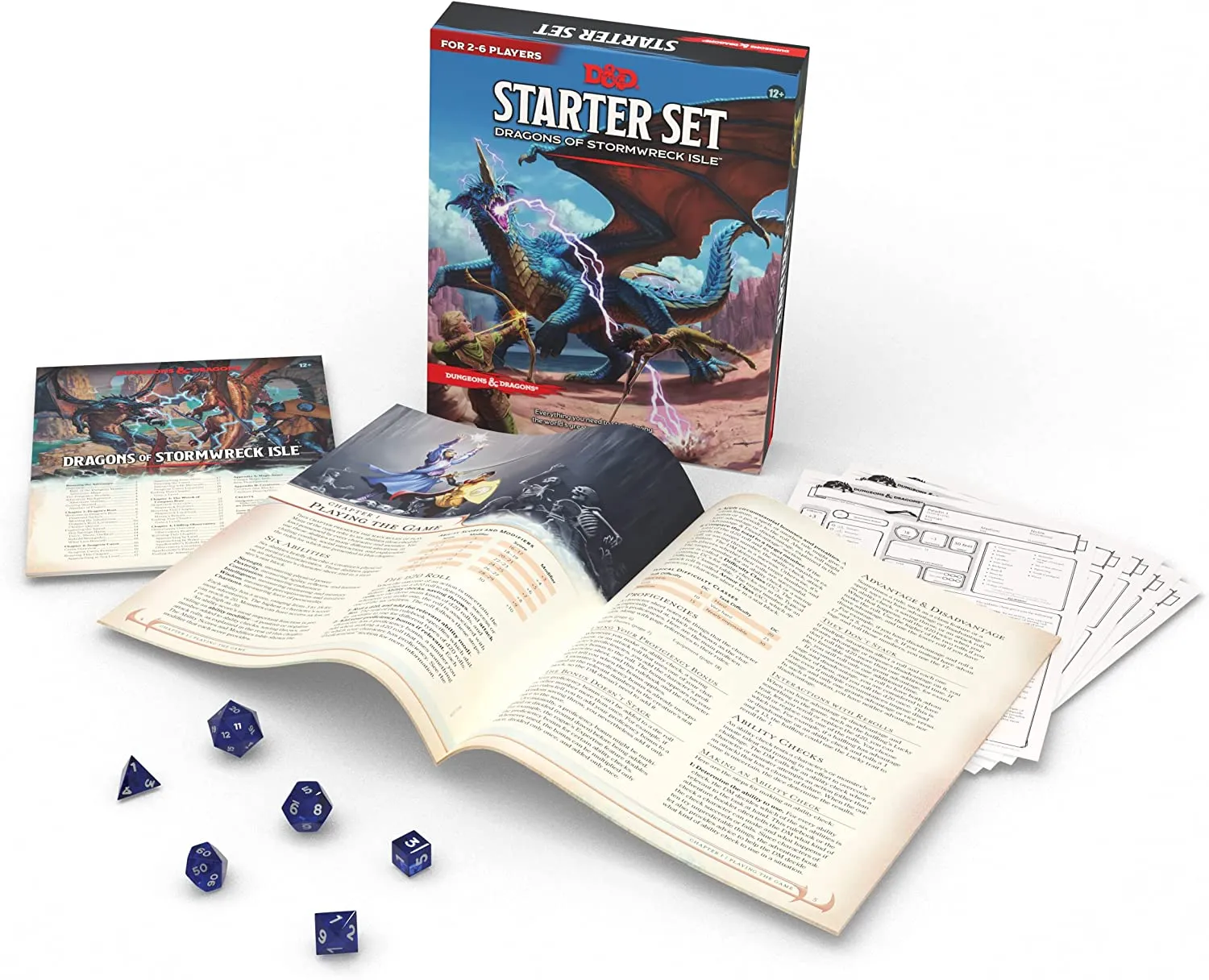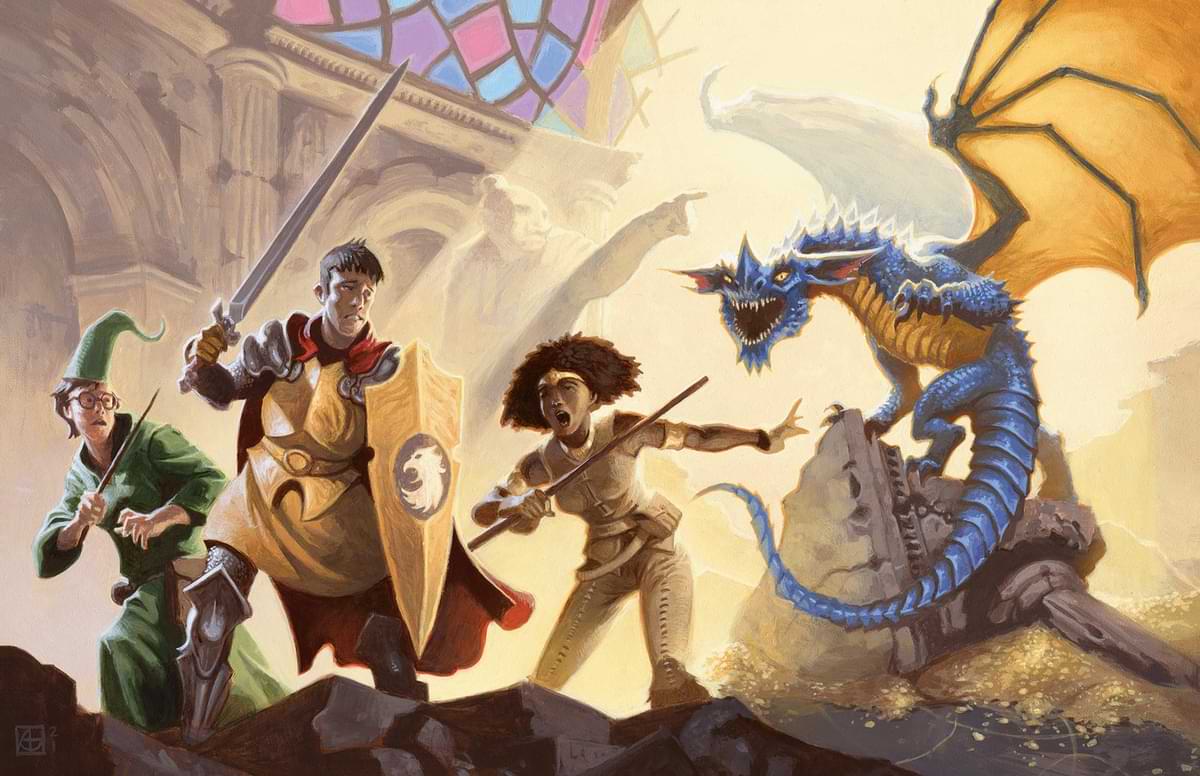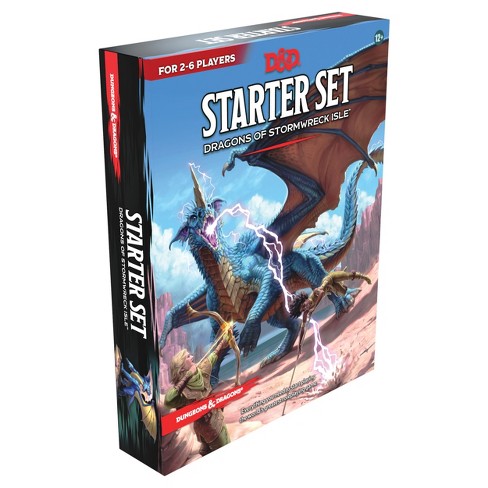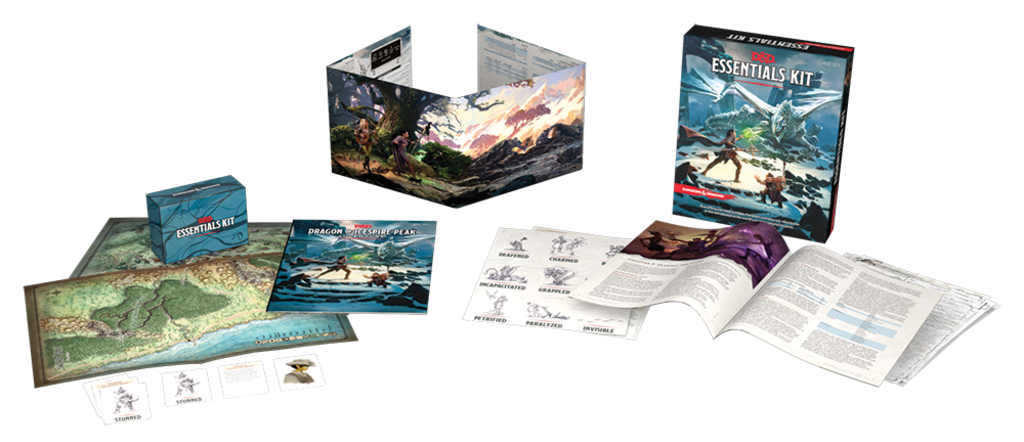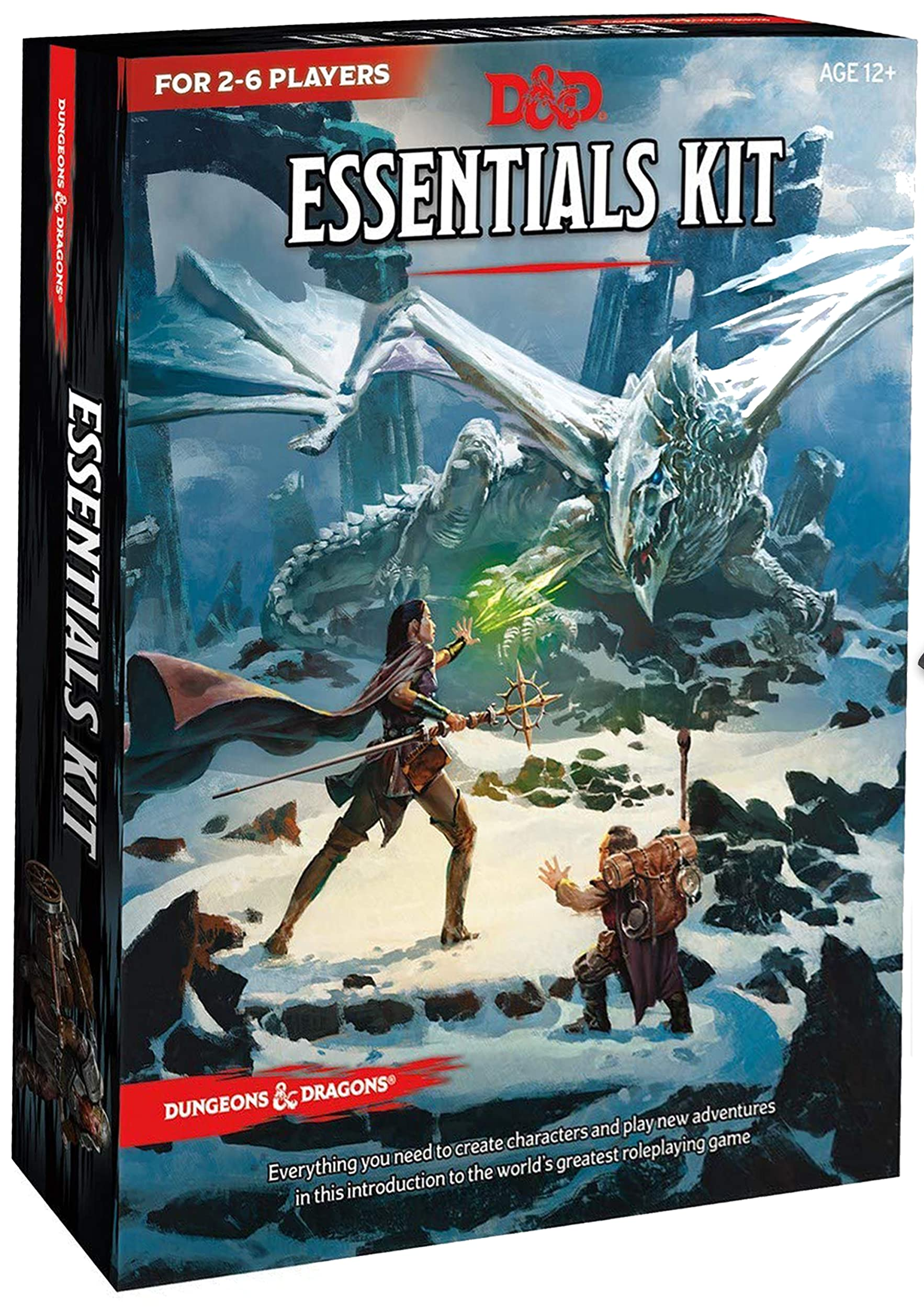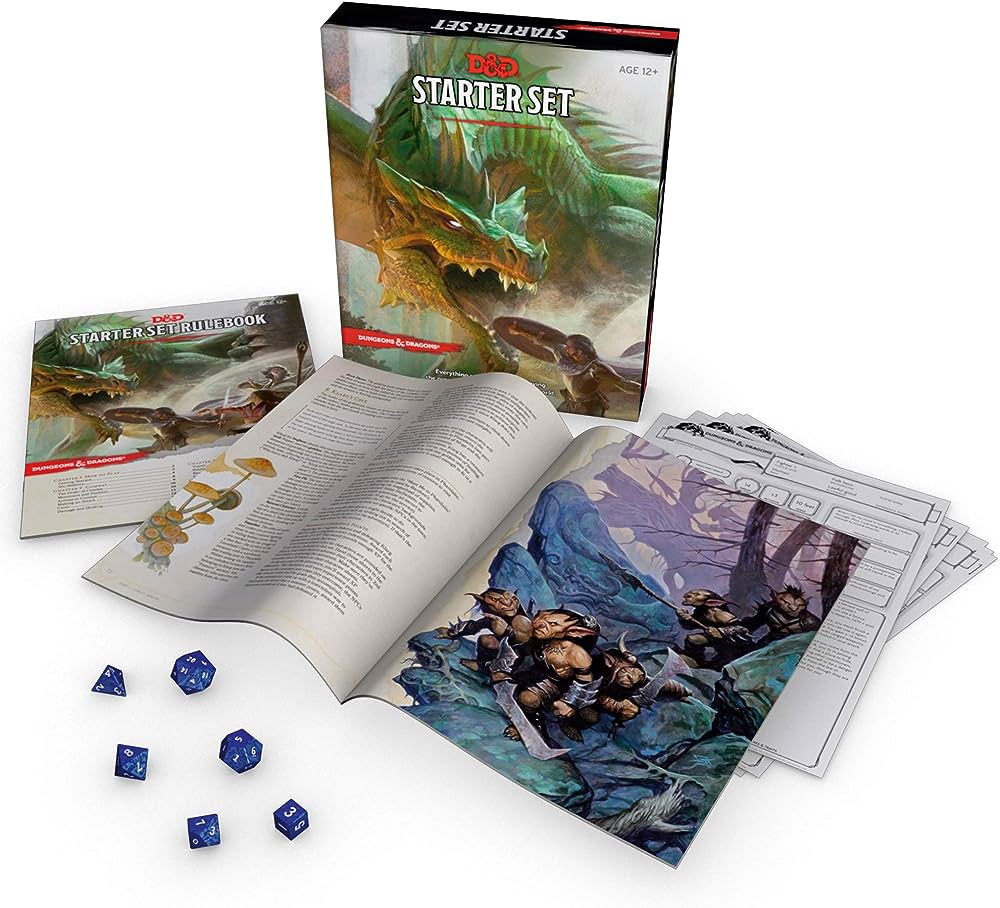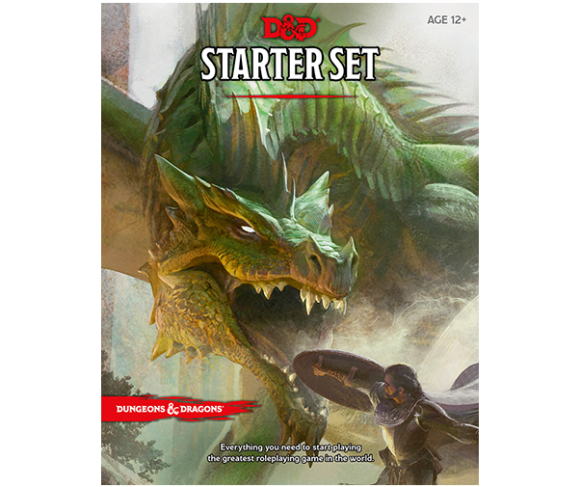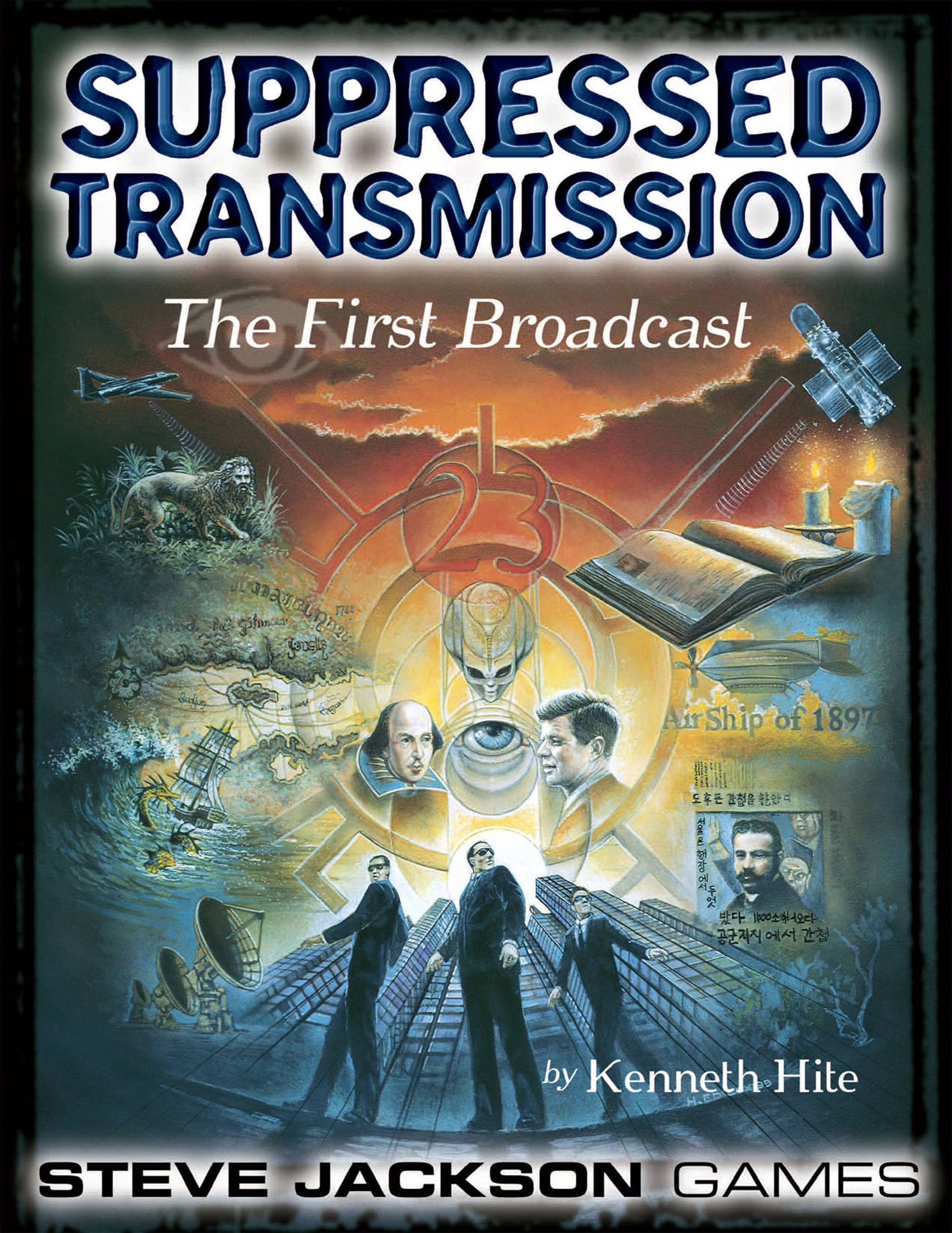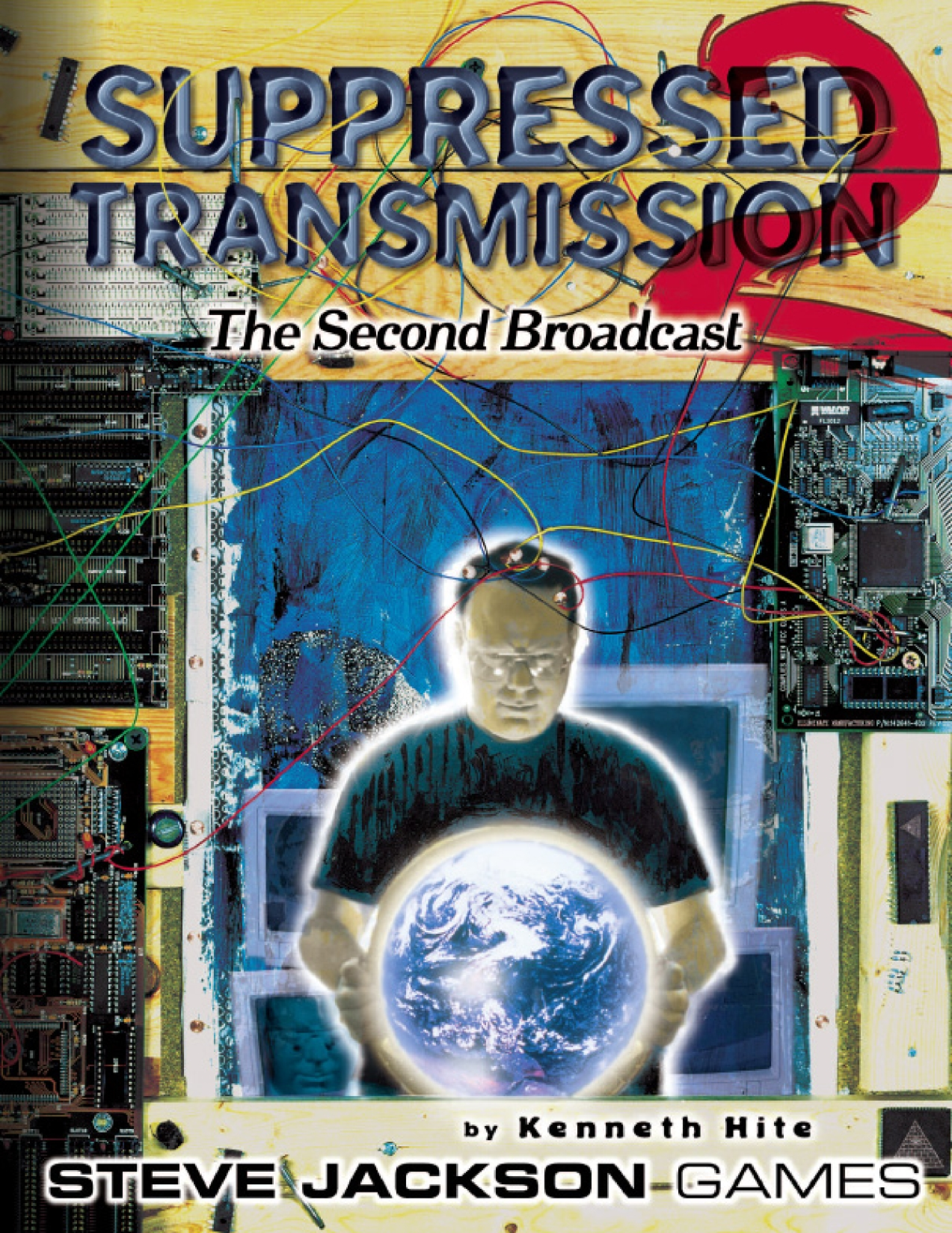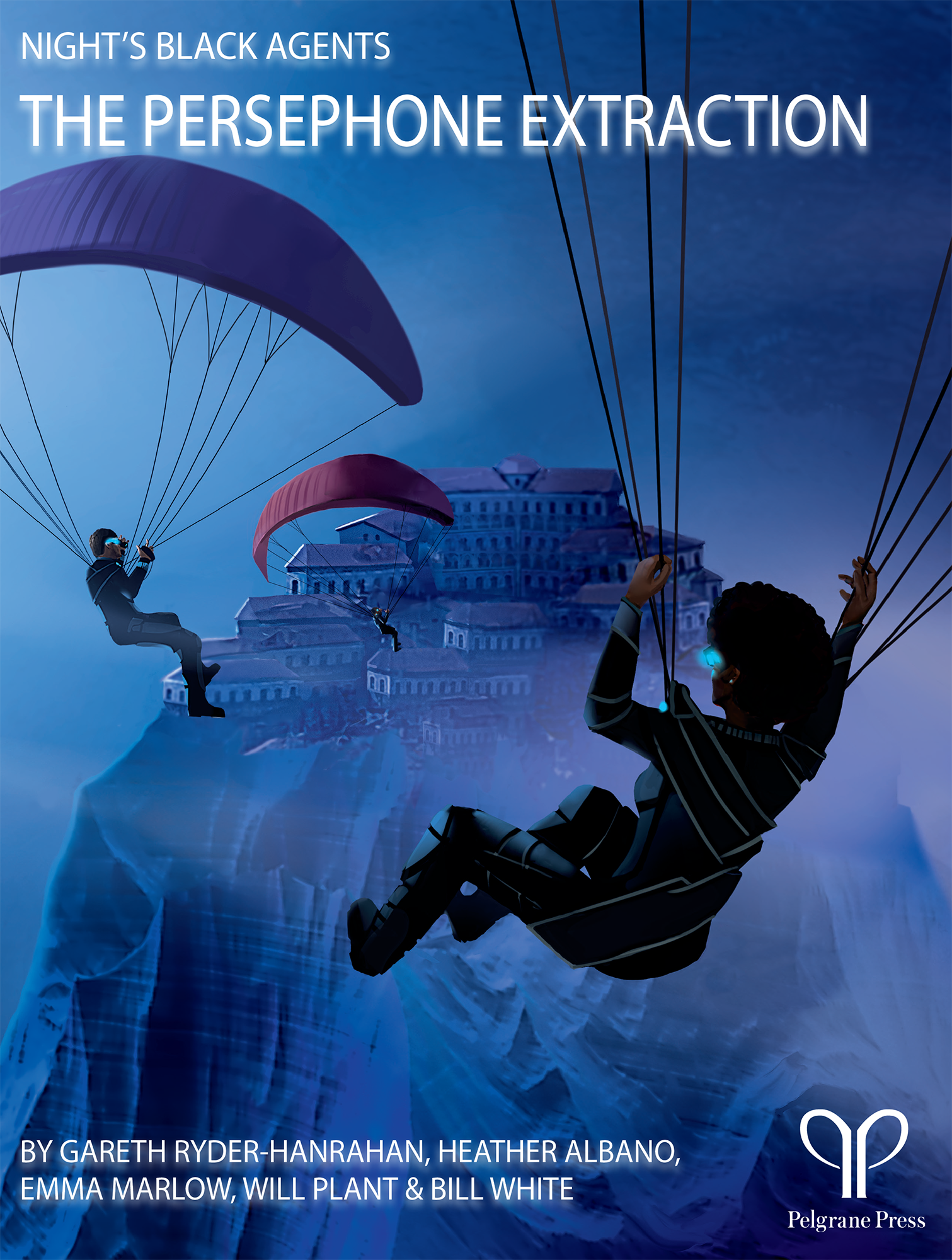I’ve previously reviewed the D&D Starter Set (2014) and the D&D Essentials Kit (2019). Now we turn our eyes to the third major introductory boxed set for D&D 5th Edition: Dragons of Stormwreck Isle.
In 2022, the original D&D Starter Set was discontinued and replaced with D&D Starter Set: Dragons of Stormwreck Isle. I suspect that, as I discussed in my review of the Essentials Kit, the primary motivation for this change remained the desire to create a new product that could be marketed to big box stores which had stopped carrying the original Starter Set: As we’ll see, very little is altered or upgraded here, and the only substantive change — replacing the Lost Mine of Phandelver adventure with the new adventure Dragons of Stormwreck Isle — could hardly be motivated by a lack of faith in the original adventure material, since plans were simultaneously made to repurpose the adventure as the opening act of the Phandelver and Below: The Shattered Obelisk campaign book.
So Wizards of the Coast’s intention seems to have been a direct swap from one Starter Set to another with as little change as possible. The first question is: Was this a good idea?
Well… probably not. The Essentials Kit had already featured a bunch of substantive improvements in the 5th Edition introductory boxed sets, all of which Stormwreck Isle rolls back:
- The dice set is incomplete.
- The booklets lack cardstock covers.
- Character creation is once again missing.
So rather than continuing to refine and improve the introductory box format, Dragons of Stormwreck Isle is, prima facie, a big step backwards in a way that feels like a completely unforced error.
Unfortunately, things don’t improve once you start reading the booklets.
RULEBOOK v. RULEBOOK
In terms of basic mechanics, the Starter Set Rulebook in Dragons of Stormwreck Isle is largely identical to the one found in the original Starter Set.
A closer comparison, however, reveals that a bunch of material has been removed. Some of this is just weird, like missing gold piece costs for armor (but not for weapons). But there’s also some pretty deep cuts, like the section on adventuring gear being gutted to a tiny fraction of the equipment originally covered.
More immediately obvious is that only a fraction of the spell list from the original Starter Set has been included. Similarly, over in the adventure booklet, the bestiary has also been reduced to a fraction of its original size (and the selection is far more limited in its breadth).
I heaped praise on the original Starter Set for not being designed as a disposable product: It felt like a complete game, and (with the exception of character creation being missing) could easily support a DM who wanted to run multiple Tier 1 campaigns.
The net effect of all these degradations to the rulebook, unfortunately, means that this is NOT true of Dragons of Stormwreck Isle. This is a boxed set you use once and then throw away. It’s an advertisement for a fully functional game, and you pay for the “privilege” of being told that you should have bought a different product.
So the question of whether or not Dragons of Stormwreck Isle is, in fact, a product that you should buy – whether for yourself or someone else interested in playing D&D for the first time — is going to almost entirely come down to how good the included adventure is.
DRAGONS OF STORMWRECK ISLE
SPOILERS FOR THE ADVENTURE!
Something else missing from Dragons of Stormwreck Isle are the sidekick rules from the Essentials Kit, which were super useful because they allowed first time DMs to start running the game even if they could only find one or two people interested in joining them.
Stormwreck Isle tries to plaster over this lack by simply suggesting that players could play multiple pregen characters. This isn’t necessarily a bad idea, but it does lead to some truly terrible advice:
A player with two characters should treat one of them as their main character and the other as a sidekick, there to help out but probably not engaging in a lot of dialogue.
If you kinda squint and try to give them the benefit of the doubt, you can see the potentially good intention of making sure that a new player doesn’t feel overwhelmed trying to roleplay multiple characters. But what they actually told the player to do is dissociate from the game world and treat characters as if they were game piece tokens.
Which is… not great.
In fact, there’s a lot of “not great” when it comes to how Dragons of Stormwreck Isle instructs both players and GMs in how to play the game. One of the things that made Lost Mine of Phandelver a great introductory adventure was that it was an excellent exemplar of what D&D adventures should look like and how they should be run. Sadly, this is not the case with Stormwreck Isle.
Instead you get bad boxed text that, for example, repeatedly takes control of the PCs away from the players and turns them into puppets.
The DM is instructed to have the world level up with the PCs. (Oof.)
There’s a section of the adventure where the PCs have the opportunity to tame a trained owlbear that’s lost its owners and gone slightly feral. This is really cool! … but then the adventure says, “Oh, no! The PCs aren’t allowed to have cool things!” and goes to great lengths to erect contrived barriers to prevent the PCs from actually using their trained owlbear.
These are all terrible lessons to be teaching new DMs by both instruction and example.
Is this intentional?
Mostly not, I suspect. The adventure is simply sloppy, careless, and amateurish in its execution, and therefore sets a sloppy, careless, and bad example for the DM.
The basic structure of Dragons of Stormwreck Isle breaks down like this:
- The pregen PCs have personal goals that bring them to Stormwreck Isle, with all of them arriving on the same boat.
- They gain the patronage of Runara, a bronze dragon (appearing in human form) who runs the local monastery.
- They’re given the option of going on one of two different adventures.
- After going on the first adventure, they go on the second.
- With both adventures complete, Runara reveals herself and sends the PCs to the Clifftop Observatory, where her former apprentice (also a dragon) has turned to evil and is doing an evil ritual that the PCs need to stop.
This lacks the ambition of Lost Mine of Phandelver and feels fairly anemic by comparison, but is mostly inoffensive.
Notably, however, the reason Runara doesn’t send the PCs immediately to Clifftop Observatory (despite potentially apocalyptic stakes) is because they aren’t experienced enough and will likely die. Which is true.
… and yet one of the pregens has the personal goal of explicitly checking out the Clifftop Observatory. Which is trivial to locate and which they can just walk to at any time. The personal goal is a path straight to death.
This is just bad design. It’s setting a new DM up to fail.
The other major problem I have with Dragons of Stormwreck Isle is that everything is plagued by a severe lack of basic internal logic.
To take just one example, the island has been plagued for forty years by the zombies of dead sailors who have drowned when their ships have wrecked on the reefs north of the island.
It turns out the source of the problem is a cursed locket onboard the wreck of the Compass Rose. The zombie problem can be solved if the PCs take the locket to a gravesite on the island where the lover of the young girl who cursed the locket is buried. The PCs will know to do this because they’ll find the captain’s log of the Compass Rose in the wreck, the final entry of which describes the creation of the cursed locket, the zombies rising from the dead, and then concludes with:
I am securing her talisman with this book in my chest, in the hope that someone who comes after us may end this nightmare by bringing Altheia’s talisman to her husband.
So, first off: Why not just take the locket yourself? “Lemme just write this log entry, carefully lock it up, and hope somebody stops by!”
But more importantly, Runara sends them on this quest knowing the Compass Rose is the source of the zombie problem: If the PCs ask questions about the zombies, she tells them the ship is the source of the problem and sends them to check it out.
Remember: Runara is a bronze dragon. Which means she could have easily dealt with the zombies on the Compass Rose and solved the problem literally decades ago.
Instead she’s just sat around and watched people die for no reason.
THE VERDICT
Although it superficially looks similar to the original Starter Set at first glance, Dragons of Stormwreck Isle is a deeply crippled product. The bottom line is that, for as long as it remains available, the Essentials Kit is a massively superior introductory boxed set and it’s definitely the one you should buy.
This mostly leaves the question of whether or not you should buy Dragons of Stormwreck Isle in addition to the Essentials Kit, the core rulebooks, or whatever other method you choose as your introduction to D&D 5th Edition. And that question, in my opinion, is going to depend almost entirely on the quality and utility of the adventure.
As a starter set adventure, of course, Dragons of Stormwreck Isle naturally invites direct comparison to Lost Mine of Phandelver. And, as I wrote in my review of the original D&D Starter Set, I think Lost Mine of Phandelver is the best introductory adventure D&D has ever had. So, first, a regression to the mean is perhaps inevitable. And, second, it’s pretty easy, in a direct comparison between the two, for us to be unduly harsh on Stormwreck Isle’s inadequacies.
Standing entirely on its own merits, therefore, how good is Dragons of Stormwreck Isle?
And I think the best answer I can give to that question is:
Mediocre.
The functional, but not daring, set pieces of the adventure are strung together with fraying filament, but the filament is never so rotten that it actually breaks. Its flaws, although myriad, never completely ruin the experience. This will never be a great adventure. It will rarely be a terrible one.
Overall, however, this leaves the D&D Starter Set: Dragons of Stormwreck Isle in rather rough shape: A crippleware rulebook wedded to a mediocre adventure, packaged with a barely adequate set of dice.
Perhaps the best case scenario we can hope for at this point is that, with the release of 2024 D&D (whatever we end up calling it), Wizards gets the opportunity for a do-over and will produce a new Starter Set that capitalizes on its previous successes instead of diminishing them.
Grade: C-
Rulebook Designer: Jeremy Crawford
Lead Adventure Designer: James Wyatt
Additional Adventure Design: Sydney Adams, Makenzie De Armas, Dan Dillon
Publisher: Wizards of the Coast
Cost: $19.95
Page Count: 80

